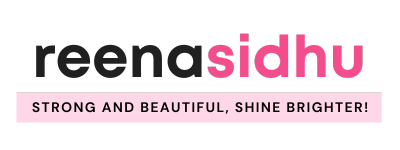What Happens When You Bleach Grey Hair
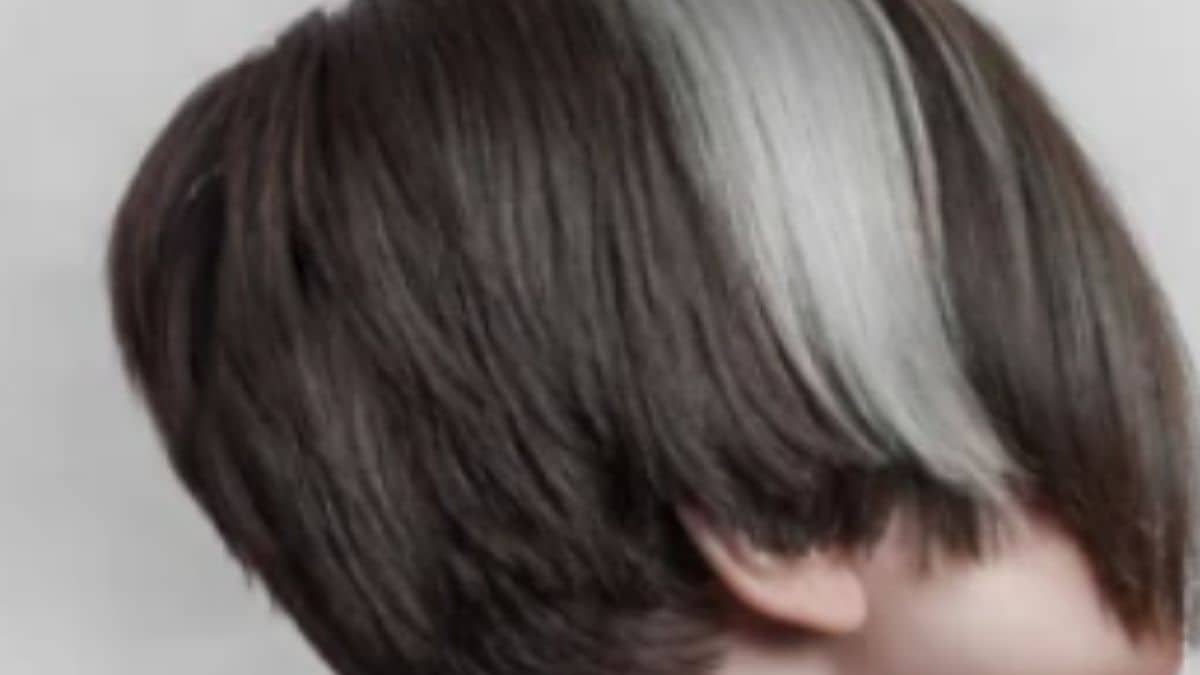
What happens when you bleach grey hair? This article breaks down the chemistry of dyeing grey hair, what happens to the chemicals once they’re on the scalp, and how these compounds affect grey follicles.
Our goal is to answer the question above.
Bleaching your hair at home is pretty easy if you know what you’re doing.
We’ll go over everything you need to know about what occurs when you bleach grey hair, from the best products to avoid pitfalls like chlorine damage and the dreaded line of demarcation.
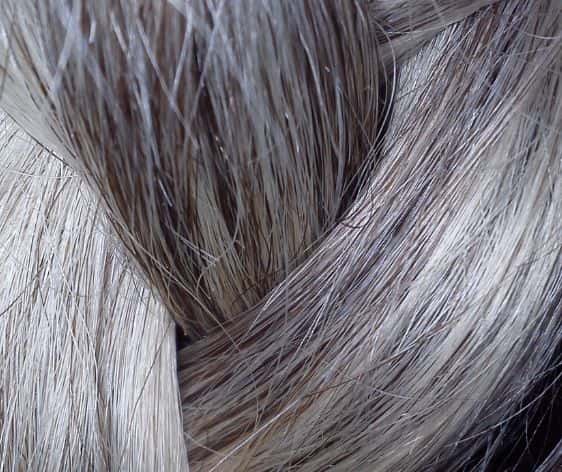
Your hair is turning white; you notice your temples are going grey.
Time to go to the hairdresser and get those roots covered up! But wait…is bleaching a good idea?
If you’re bleaching your hair, make sure you do it right.
Otherwise, you will end up with brassy yellow hair, which is NOT what you want.
If you have gray hair, bleaching can be a little bit trickier than if you are a natural blonde or brunette.
This is because gray hair doesn’t absorb dye very well and can turn yellow when bleached.
The best way to bleach gray hair is by using high-quality products like the ones listed below.
You must also prepare your hair before the bleaching procedure and use after-care products.
This article will show you how to bleach gray hair at home without damaging it and avoid an orange color after bleaching.
Can you bleach gray hair, or is it bad for your hair?
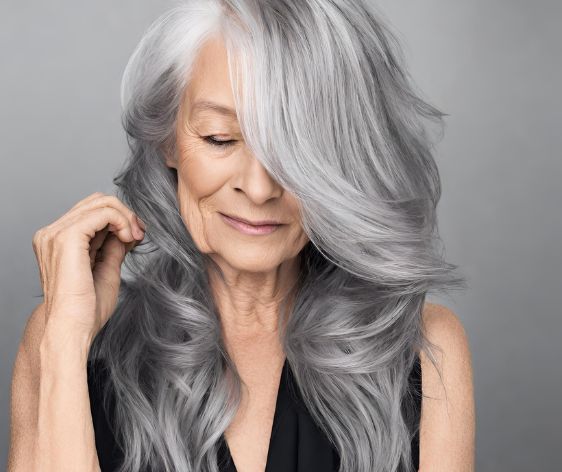
If you have gray hair, you’re probably wondering if you can bleach it.
The short answer is yes!
However, trying it at home is not a smart idea.
Bleaching is a chemical process that changes the structure of your hair.
If you choose a home bleaching kit, you risk damaging your hair and having yellow-gray hair.
To get the best results for graying hair, we recommend visiting a professional colorist who can assess your hair and offer the safest and most effective way to lighten your locks.
Most people have a mix of different hair types on their heads, so the trick is to treat each of these different hair types differently.
If you have been bleaching your hair for years, maybe you have fine, virgin hair growing in at the roots.
The rest of your hair might be coarse and porous from years of chemical treatments.
If you are using bleach for the first time, it will most likely turn out orange and brassy if your starting color is dark brown or black.
This is because as the bleach lightens your hair, it also removes natural pigment and artificial dye.
You’ll probably need to tone your hair after bleaching it to neutralize any unwanted tones.
If you already have gray hair, it’s best not to use bleach on it to avoid damage.
Instead, opt for light blonde dyes that won’t require harsh chemicals or use gray blending techniques that hide gray hairs with highlights and lowlights.
Does GREY hair turn yellow when bleached
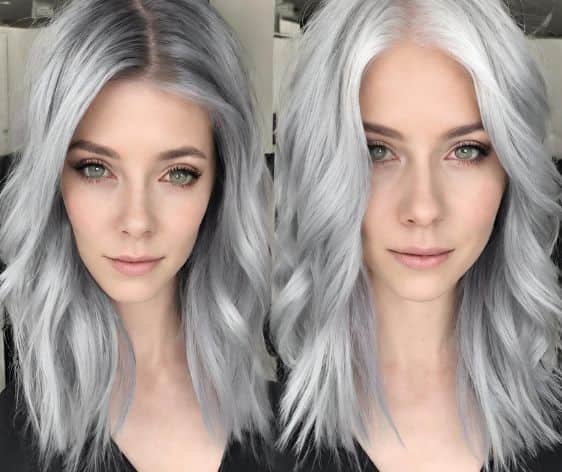
When hair grows naturally, the color comes from melanin.
Bleaching it will not turn it yellow because there is no color to begin with. If you’ve already colored your hair, it will turn yellow due to the treatment.
Gray hair is different than blonde or brunette hair. It is white, so bleaching it won’t affect its original color.
The only way that hair can go yellow when bleached is if there is a dye buildup on the strands.
If you have gray hair but have been dying it for years, you may find that the gray doesn’t take up the bleach and other colors because of a buildup of dye on the strands.
Since gray hair has no natural pigment, bleach will not penetrate through any leftover dye deposited by a previous coloring session and could leave you with yellow-looking hair instead of platinum blonde.
What color does grey go when bleached
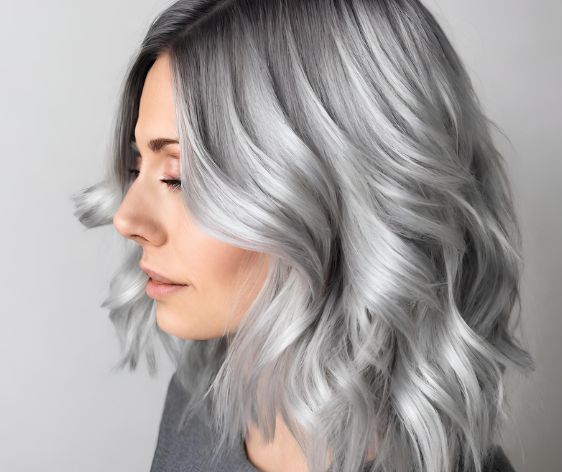
Those with naturally grey hair may be used to the color fade. But what happens when you bleach grey hair?
If you’ve ever dyed your hair before, you’ll know that the process requires using a dye that lifts the natural pigment from your hair and replaces it with a new one.
This is done via the use of a chemical called ammonia.
However, when you have naturally grey hair, there is no existing pigment for the dye to lift as Mother Nature has already stripped everything out.
Therefore, the bleaching agent doesn’t have any natural pigment to remove and instead works to strip out existing artificial color pigments that previous dye jobs have added.
It will also work on the yellowy tones that often appear in grey hair after years of ammonia-based products being used on it.
Now you know how bleaching works; let’s look at what happens when you bleach grey hair – What color will it go?
Light blonde
Bleach creates a light blonde shade that often appears white when first applied.
However, this isn’t a permanent change, as the underlying yellow tones tend to reappear fairly quickly.
When you dye your hair grey, it goes through three different stages. Stage one, when you first apply the dye, is very light.
This is when your hair could be considered a platinum blonde.
After this, the color will settle into an ashy grey tone.
You might notice that your hair looks green at this stage – if you see that it does, don’t panic!
Stage three occurs about a week after you first dyed your hair grey.
The color should have settled into pure grey after this time. If there’s any green left in color, apply a silver shampoo to help get rid of it.
If you want to bleach and then dye your hair grey, remember that bleaching on its own can cause some damage to your hair.
You might want to use a toner after bleaching to eliminate brassiness and yellow tones.
Of course, toner isn’t necessary before dying your hair grey, but it can make the process easier by reducing brassy tones that can alter the color of your final result.
Avoid using harsh dyes and bleaches on your hair too often.
How to lighten your hair in a way that lengthens the time between touch-ups
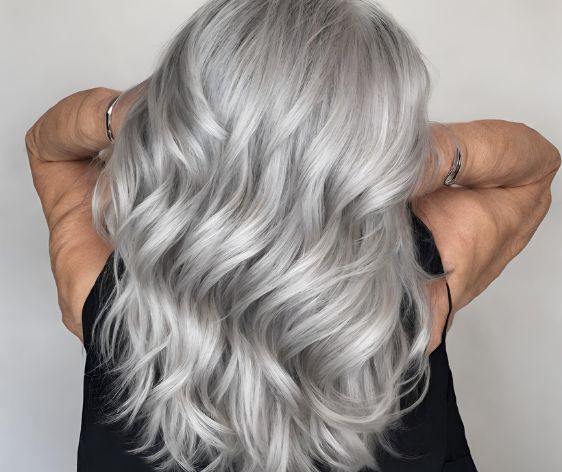
If you’re a fan of lightening your hair but find yourself constantly damaging it with bleach, there’s another way.
Instead of bleaching your hair to blonde and toning it, you can tone your hair before you bleach it.
The timing of how long you leave the toner depends on your hair’s condition.
For some people, 5 minutes is enough for a full lift, whereas it may take 20 minutes or more for others.
You’ll have to determine what works best for you by experimenting a little bit.
If you’re looking to get rid of yellow/orange tones, then color-depositing shampoos are great.
So when it comes to bleaching hair, it’s important to know the difference between lightning and lifting.
Lightening refers to removing color from the hair and is identical to lifting.
Lifting, however, refers to removing color from the hair without causing damage.
This subtle distinction has a lot of implications for those with gray or white hair because it means that you can lighten your hair without having to bleach it.
However, if you want to lift your gray or white hair, you will bleach it to achieve a lighter shade.
Let’s explain this further:
The term “lifting” is used by hairdressers and stylists to remove the color from the hair without causing damage.
For a product or service to be considered lifting rather than lightening, the cuticle must remain intact, and there should be no evidence of breakage or damage.
This means that the product or service cannot contain bleach in any form.
Lifting is used mostly on lighter shades of brown and blondes since these are easier for products and services that don’t contain bleach to lift.
However, bleaching agents like hydrogen peroxide, ammonia, and peroxide are necessary for darker shades of brown and black because of these.
How to tone gray hair without bleaching it
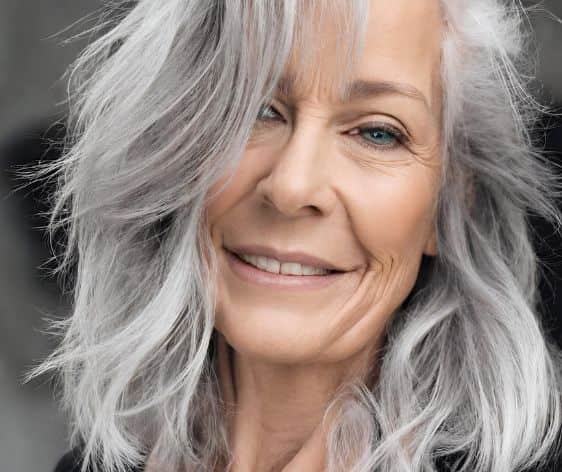
If you’ve gone gray, you may be looking for a way to blend it in with your natural hair color.
Or maybe you want a temporary change until you can get to the salon.
Different products and techniques can help you tone your gray hair at home.
If you want to get your gray hair to look like platinum blonde, there’s no way you can do it without using bleach.
A semi-permanent or demi-permanent dye won’t deposit enough color to neutralize your grays — especially if your natural color is darker than light brown.
For this reason, it’s best to have your stylist handle this process for you.
If you decide to tone gray hair at home, make sure to follow the instructions on the box carefully and don’t leave the product on longer than necessary.
You can also opt for a toning shampoo instead of dyeing your entire head of hair, which will help reduce the damage from bleaching that occurred in the past.
How to bleach gray hair safely.
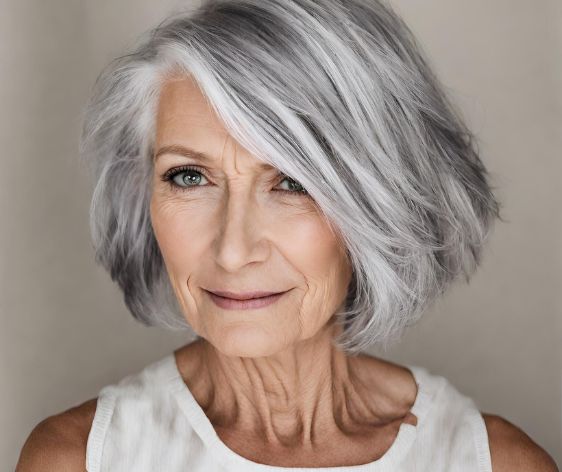
When you’re ready for a new season or a fresh start, grab a bottle of hair dye and give yourself an at-home dye job.
If your hair is already dyed, however, bleaching can help lift the color so that you can dye it something else.
Bleaching your hair is a simple process, and the only thing that could go wrong is if you don’t follow the directions carefully and something doesn’t turn out right.
The only way to get silver hair without using bleach is to use toner. However, toners can only be used on blonde hair, and even then, only if you can lift the natural pigment out of the hair first.
If you have dark roots, for example, you may need to lighten them first so that the toner can work its magic.
If you want platinum blonde hair or gray hair that’s super silvery-white, then bleaching is going to be necessary.
To tone your gray hair at home:
- Mix up your favorite shade of Manic Panic or Arctic Fox.
- If your hair is dark and you need to lift the color first, try mixing in some bleach with your toner (instructions below).
- If you have light brown roots but want a more vibrant silver color, try using a purple shampoo once a week. This will help maintain your silver color and keep it from looking brassy between salon visits.
Risks
While most people who use bleach won’t experience any problems, some are allergic to bleach or other ingredients used in the dyeing process.
If you are sensitive to any of these chemicals or have allergies, talk with your doctor before using bleach on your body or in your home.
In addition, ifLikewise, if you develop hives or notice redness and swelling on your skin after using bleach, wash off the solution immediately with soap and water and contact your doctor.
How to Make Hair Color Last Longer On Gray Hair – 4 easy tricks
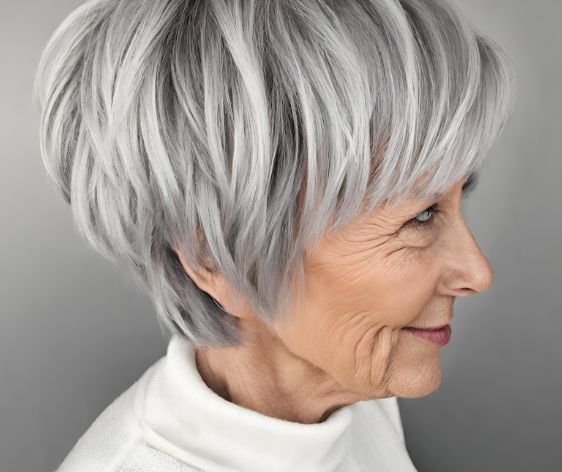
The first thing that happens when you bleach your hair is the peroxide penetrates the hair shaft and starts to break down the melanin in your hair.
This is what makes your hair go lighter.
The second thing that happens is while your hair is being bleached, it also breaks down the structure of your hair.
The more you bleach your hair, the more porous (stripped) it will become.
This means that your hair will be very dry and damaged if you don’t keep up with treatments.
The third thing that happens is while you’re bleaching, it can change the color of your natural pigment from its natural state.
For example, if your natural base color is red or orange, then after a few rounds of bleaching, it might turn yellow-orange or yellow-brown.
The fourth thing is you’ll probably need to tone it every other time you bleach it to get rid of any brassy tones and make sure it stays a nice cool white blonde.
Can I use blond box dye over bleached hair? Does it damage hair?
Use fewer developers. If you use a 40 volume developer, switch to 20 or 30 volume.
The greater the number, the stronger the lift (bleaching).
Use a toner or color glaze. You can get some of these at Sally’s Beauty Supply, ULTA, or even Target.
Color glazes are temporary and will wash out in about six shampoos.
If your hair has yellow undertones (which it will bleach), use a purple shampoo like Clairol Shimmer Lights to tone down the brassiness.
How to fix bright yellow roots: 2 possible solutions
When you bleach your hair to get that white-blonde look, there’s always the risk of getting brassy tones.
This is especially true for persons with a golden or brown complexion (as opposed to those with naturally lighter hair).
The darker your starting color, the more likely you’ll get a brassy result.
Fortunately, there are two approaches to this issue.
First, you can use a purple shampoo to tone down the brassiness in your hair — or you could bleach your roots again!
Which option you take will determine how much upkeep you want to devote to your new style.
How to get platinum blonde hair from golden blonde (step by step)
If you want to go from medium blonde hair color to silver grey or even white, there are a few steps in between that you need to take first.
The main reason for this is that your hair needs to be lifted before being toned.
In other words, the darker natural pigment needs to be completely removed before the cool toner can take effect.
If you skip this stage, there’s no way your result will turn out grey.
There are three aspects of this process:
1. Bleach your hair to a light blonde color (if you’re not there already).
2. Tone your hair with a purple shampoo to eliminate yellow/orange undertones.
3. add highlights and lowlights to lift your base color to a platinum blonde shade.
Here’s what happens when you bleach gray hair:
Grey hair tends to have a yellow undertone, so it appears so dull and off-tone in between salon visits.
This unwanted warmth is caused by leftover pigments in the strands that haven’t been completely lifted during the bleaching process.
The shade of yellow can vary depending on how many times you have colored your hair in the past or whether you have 100% natural grey or only partially grey strands.
How much does it cost to touch up your roots in a professional salon?
Roots are a fact of life.
Whether you’re completely gray or just starting to see silver, you’ve probably already thought about coloring your hair.
But how much does it cost to touch up your roots in a professional salon? And if you’re looking for a way to keep the cost down, can you save money by touching up your roots at home?
Root touch-ups at the salon
According to experts from Madison Reed and Matrix, the cost of getting your roots touched up in a salon typically ranges from $75 to $150.
Of course, if you’re getting highlights as well as your roots touched up, it’s likely to be more expensive — but it will vary depending on the length and thickness of your hair.
If you go with a DIY kit instead, the prices are generally lower than going all-in at the salon.
That said, unless you’re an experienced colorist who can ensure an even application, it may be worth paying a little extra for that level of expertise.
Depending on your stylist, most salon services can be priced a la carte, but generally expect to pay $60-$75 for just a root touch-up.
If you want a full color or highlights in addition to touching up your roots, prices will increase.
In general, the higher the charge, the longer and thicker your hair is.
You can also try using at-home color kits to touch up your roots in between appointments.
But if you’re new to coloring your hair or have never done it before, it’s best to leave this step to a professional stylist.
When hair has been previously colored, bleaching causes damage through oxidative stress.
This leads to coarse, frizzy, and dry hair. Other factors that play a role are the concentration and percentage of bleach used and how long it is left on the hair.
Contrary to popular belief, bleaching grey hair won’t make it any lighter than naturally colored hair and can lead to a damaged and brittle look, as highlighted above.
As you can see, bleaching natural grey hair has unexpected results. But if you desperately want to change the color of your hair and have some spare time on your hands, why not give it a try?
After all, you can always color it back.
